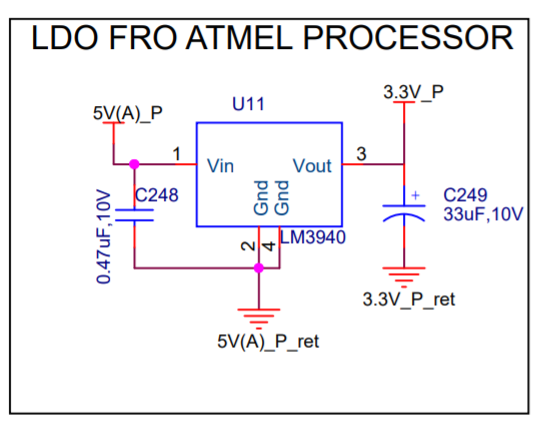Hello,
I'm using LM3940 in my project to generate 3.3 V supply for a microcontroller. The input is 5.2 V. For the initial period after assembly this IC was giving me 3.28 V, but now it is showing 3.7 V output which is out of the recommended region of operation for the microcontroller. The circuit for LM3940 is same as the "simplified circuit" mentioned in the its datasheet. I wanted to know the possible reasons because of which this issue can happen. I have attached the circuit diagram of the LDO and the output voltage.
I had raised the question before also but the was asked regarding the output voltage graph, but due to covid-19 lockdown I was unable to provide the details that time.

Circuit of LM3940 used in my schematics
The input voltage is 5.2 V and the output voltage is 3.67 V. I'm using the same circuit with similar input voltage at one more place in my PCB but there the output is 3.26 V (<3.3 V as per my requirement).
Please tell me what can be the issue?
Regards,
Abhishek K Singh
Reg



